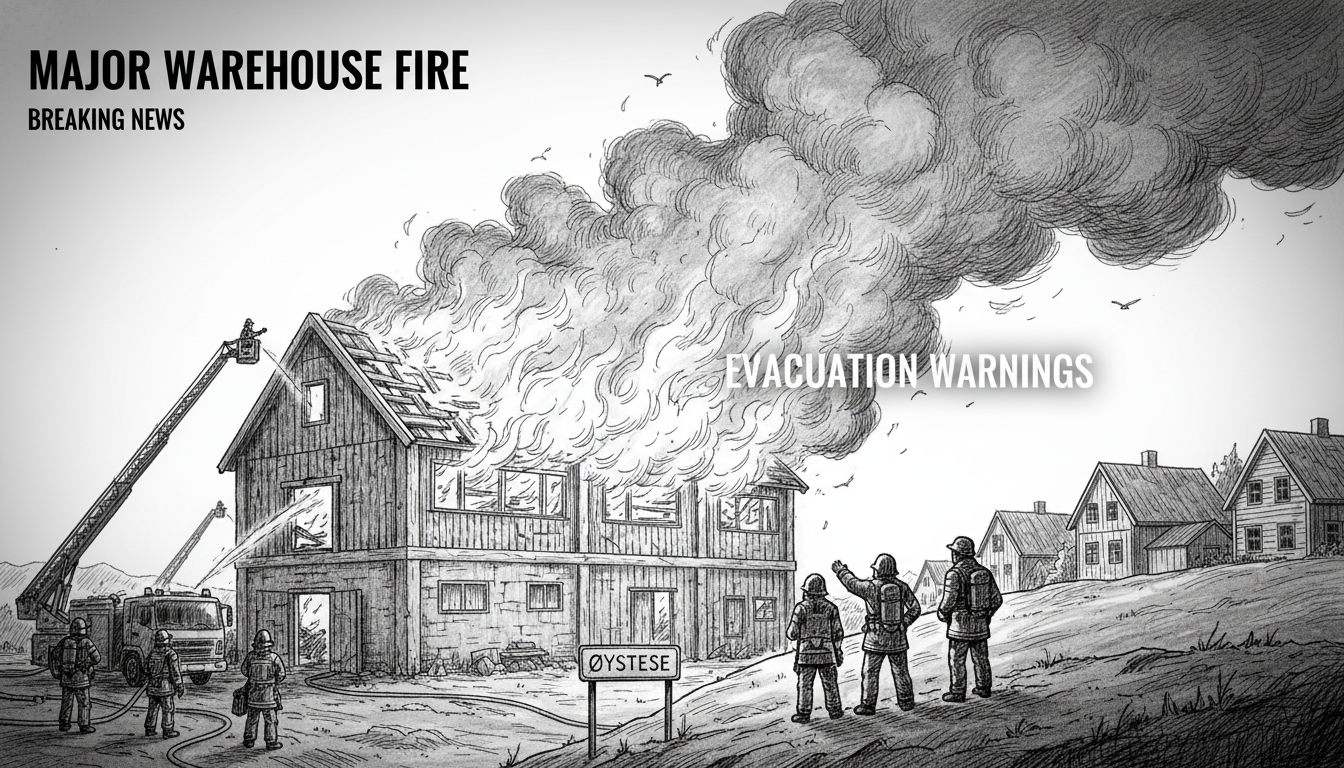A large warehouse building caught fire in Øystese, Norway during the early morning hours. Emergency services received the first alarm at 2:20 AM. The 110 emergency center described visible flames and heavy smoke coming from the structure.
Police issued urgent safety recommendations to nearby residents by 3:15 AM. They advised people to close all windows and shut down ventilation systems. The smoke was drifting toward residential areas, creating potential health hazards.
The warehouse was constructed from wood and concrete according to authorities. Officials confirmed the building was not currently in use when the fire started. Initial reports could not confirm whether anyone was inside the structure during the incident.
Øystese sits in the Hardanger region known for its fjord landscapes and agricultural production. The area contains both industrial facilities and residential neighborhoods in close proximity. This creates unique challenges for emergency response when fires occur near populated zones.
Norwegian building codes require strict fire safety measures for industrial structures. Wooden warehouses face particular scrutiny due to combustion risks. Many older industrial buildings in Norway contain wooden elements despite modern construction preferences for non-combustible materials.
Local fire departments across Norway maintain specialized equipment for industrial blazes. They train extensively for scenarios involving chemical storage and complex building layouts. The remote locations of many Norwegian towns add complexity to emergency response coordination.
What does this mean for the local community? Residents will likely face temporary disruptions as investigators examine the scene. Air quality monitoring may continue for several days depending on wind patterns. The incident highlights the importance of maintaining distance between industrial and residential zones in community planning.
Norwegian authorities typically conduct thorough investigations into major industrial fires. They examine potential causes including electrical faults, heating systems, and human activity. Insurance assessments and rebuilding considerations will follow once the site is declared safe.
This fire represents another test for Norway's emergency response systems in rural areas. The country maintains high standards for fire safety, but older structures present ongoing challenges. The incident serves as a reminder that fire risks persist even in well-regulated environments.

